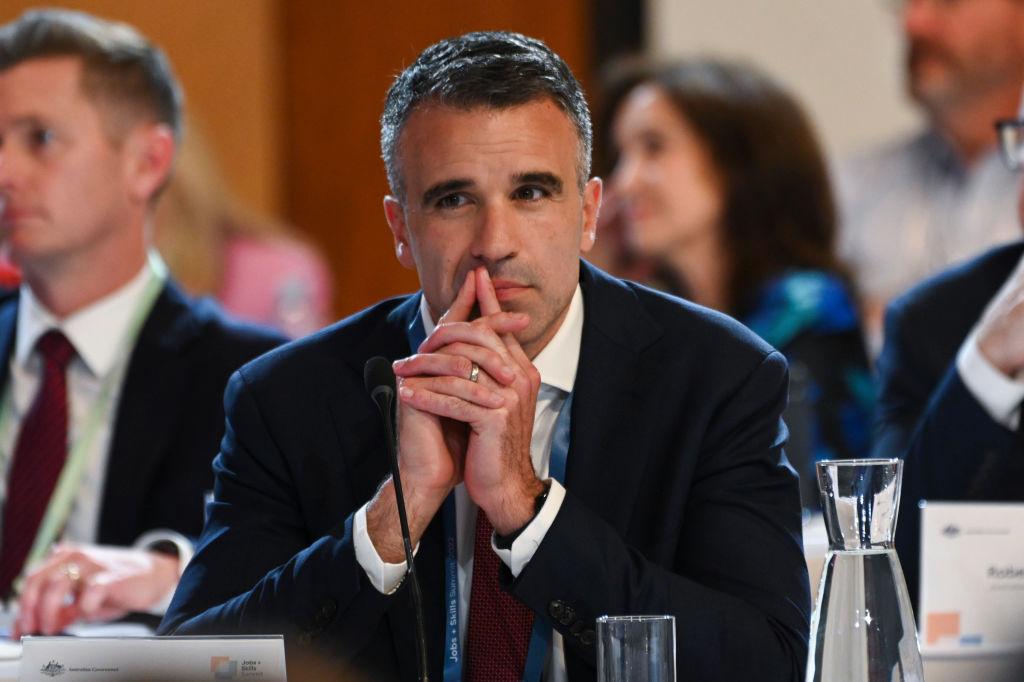The spate of recent elections should be a wake-up call to the state divisions of the Liberal Party across Australia.
The result in Tasmania—where the party is endeavouring to form a minority government—is but one sign that the state Liberal brand is tarnished.
More telling was the result of a by-election in South Australia for the state seat of Dunstan.
For the first time in 116 years, a sitting premier has appeared to win a by-election while in government.
Where opposition parties usually perform well against sitting governments, the opposite occurred in Adelaide.
The result should not have come as a complete shock to the party. In 2020, then-Premier Steven Marshall only held the seat by 260 votes. Mr. Marshall had been a member for some 14 years. The Liberals lost government in 2022 after just one term, handing the reins to Labor leader Peter Malinauskus.
Like New South Wales (NSW) Premier Chris Minns, Mr. Malinauskus presents as a middle-of-the-road leader. Labor attracted voters in well-to-do suburbs that historically voted for the Liberal Party.
The other feature of the result was the high vote for the left-wing Greens, increasing from about 14 to 22 percent.
The results paint a dire picture for the Liberals at the state and territory levels.
The party has been reduced to a rump in Western Australia and is currently unelectable in Victoria.
The only encouraging state for conservatives currently is Queensland, where the Liberal National Party is performing well and the Labor government is under intense scrutiny.
Party Infighting, Lack of Vision Behind Liberals’ Decline
Factionalism and internal warfare have replaced the drive and compromise to win government in most state divisions of the Liberals.The faceless men and women who run the party have become entangled in a spiral of defeat.
Voters are deserting alternatives like the Greens, the Teals or independents.
At a time when Australians are desperately seeking leadership and solutions to the many challenges, they are met with infighting and a lack of vision.
Some observers were quick to conclude that the result in the Dunstan by-election would have federal consequences.
The state seat falls within the national seat of Sturt, held for many years by Christopher Pyne, which is now held for the Liberals by James Stevens with a margin of just 0.45 percent—just a few hundred votes.
As expected, political opponents of the Liberals were quick to claim that the Dunstan result was a reflection of the state of the party. The Greens proclaimed it had a “woman problem” even though the Liberal candidate was a woman!
These post-election comments are usually self-serving.
The Fate of the Coalition in Their Own Hands
The current danger is that many voters are unimpressed by the failure of both major parties to advocate for solutions.Despite claims otherwise, the Dunstan result does not necessarily flow onto the next federal election.
First, the federal Liberal-National Coalition vote has been trending upwards in the polls. While it is still not high enough to win a majority, the direction is positive.
Secondly, Peter Dutton and the Opposition have suffered no loss by advocating for policies vastly different to the Labor government.
The result of The Voice referendum was a case in point.
The advocacy for the use of nuclear power has also been a plus for the Coalition.
If the Coalition is prepared to advance other policies in the next year to meet Australia’s challenges it may win enough votes to displace Labor.
There is much fertile ground: a cost-of-living policy that addresses the challenges of housing and immigration is critical. Raising national productivity is an imperative, as is reducing crippling taxes, and costs on business.
The Coalition’s primary vote has improved, although historically Oppositions have tended to lead in the polls midterm. More work is necessary if they are to have a shot at winning government at the next federal election.
Australians have generally distinguished between state and national elections. They understand the different responsibilities and are prepared to vote for different parties.







